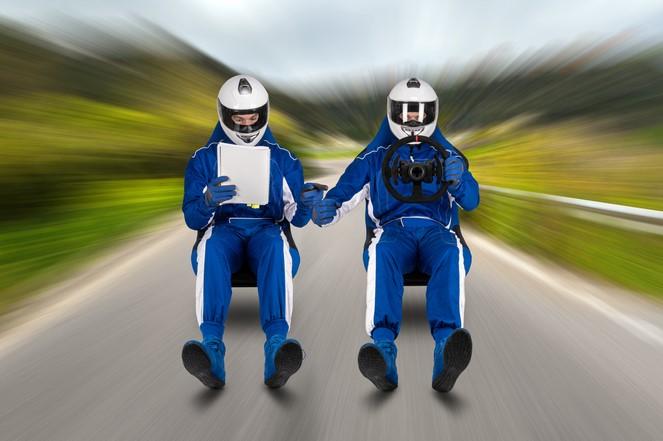Hybrid meetings are now fully established in the workplace, and many of our business school students will go on to join global teams after their graduation, where they will share insights and discussions with colleagues in-person or online.
However, we know that hybrid teaching in an educational setting can’t simply mirror office practices. Hybrid teaching requires lecturers to engage the entire class – remote and physically present students – simultaneously, while ensuring that everyone achieves the intended learning objectives. When considering ways of extending the physical classroom digitally, effective teaching delivery must be the focus.
After extensive discussions on multi-mode learning, feedback from faculty and students, and experiments with teaching technologies, we’ve adopted a new approach that benefits teachers and students alike. We call this the “co-pilot” concept.
A co-pilot is an additional member of the teaching team who sits in the physical lecture room, connected to a remote classroom being streamed. The co-pilot can track the movement of the lecturer with video cameras for remote participants, zooming in to whiteboards if required or panning to students in the lecture room who are asking questions. They also manage the online discussion board for remote students.
- Resource collection: Higher education goes hybrid
- Classroom management strategies to enhance hyflex learning
- How to engage students when some are in the room and some are on Zoom
If educational institutions are experimenting with ways to support lecturers, they might be interested in trialling co-pilot-supported hybrid learning. We would like to share five related lessons from our experience.
1. Find ways to enable lecturers to focus on teaching
Effective use of co-pilots enables lecturers to focus on what they do best. Without the additional cognitive load, lecturers are free to focus solely on storytelling, sharing concepts, data and insights, and supporting student case discussions. Just as rally drivers and airline pilots rely on co-pilots, so can lecturers! Navigating a complex learning journey is much more effective with live engagement across modes, and this can foster powerful classroom dynamics.
2. Foster a sense of remote student belonging
Co-pilots should act as online facilitators. Remote students are less likely to have their contributions or questions missed when monitored. In fact, we found that these remote students felt they were an integral part of the overall classroom dynamic. Some students prefer to raise a hand virtually to share a perspective with the class directly, while others prefer to reflect and type questions or comments into the chat. Make it clear with students and co-pilots that any kind of contribution is welcome and allow for flexibility in interactions.
3. Ensure co-pilots have basic knowledge of the subject matter
A knowledgeable and skilled co-pilot can tackle clarification questions autonomously and type direct responses to students. Not only can they bring a contribution to the attention of the lecturer, they can also provide their own answers and opinions. Such coordination expands the discussion, rather than slowing the class to repeat points that were missed. We found that sharing teaching materials, like slides, with co-pilots well in advance of the lecture, can go a long way in equipping them with the knowledge to tackle basic questions themselves. We’ve had great success using co-pilots who are research students or recent graduates from the programmes they are hired to work on.
4. Coordinate the interaction between all participants
Virtual and physical breakout discussions on academic cases or applied learning discussions can be enhanced with active management. If you train the co-pilot to check in on remote, breakout-room groups while the lecturer drops in on groups in the lecture theatre, this can increase the quality of the debriefing with the whole class. Co-pilots can also manage combined breakout groups in which in-class and remote students work together: this can feel seamless to students, regardless of their mode of learning, and avoid the sense of two distinct student groupings in one classroom.
5. Invest in enabling technology for immersive classroom experiences
Technology is key to the immersive experience. We’ve installed audience microphone arrays that accurately capture discussions in the physical classroom without picking up distracting background noise. This has enormously enhanced the audio experience for our online students, particularly when listening to in-class student comments. Integrated tracking cameras ensure remote students can follow the lecturer and view their fellow students. Well-positioned digital screens in the lecture room can display a gallery of remote students so they are visible to their in-class peers. Real-time visual and audio experiences contribute to the sense of an extended classroom, reducing the feeling of separation between the physical and digital.
We have found that hybrid teaching with co-pilots can deliver a superior overall learning experience
Whether used for teaching full-time or part-time courses, the ability to deliver a seamless extended classroom is much more effective with a co-pilot as a coordinator and “smart filter” in communications. Attendance and participation have increased across our classes and seminars due to the use of co-pilots, and we hope that other institutions are able to benefit from these learnings.
Omar Merlo is associate dean (external relations) and James Eteen is academic director for the master’s in management and international management at Imperial College Business School.
If you would like advice and insight from academics and university staff delivered direct to your inbox each week, sign up for the Campus newsletter.




comment